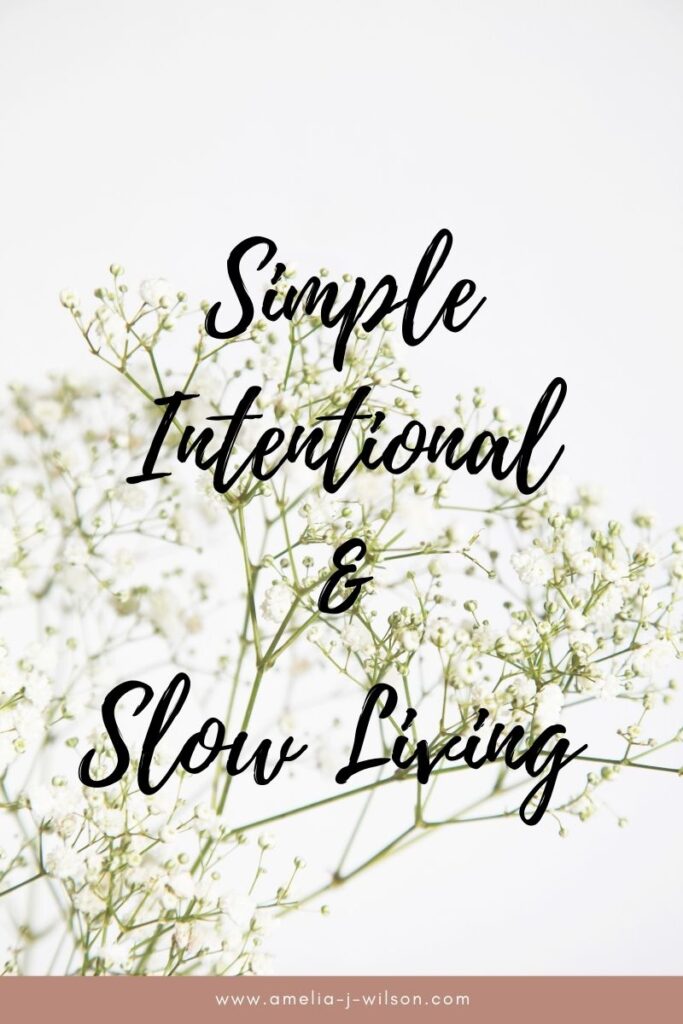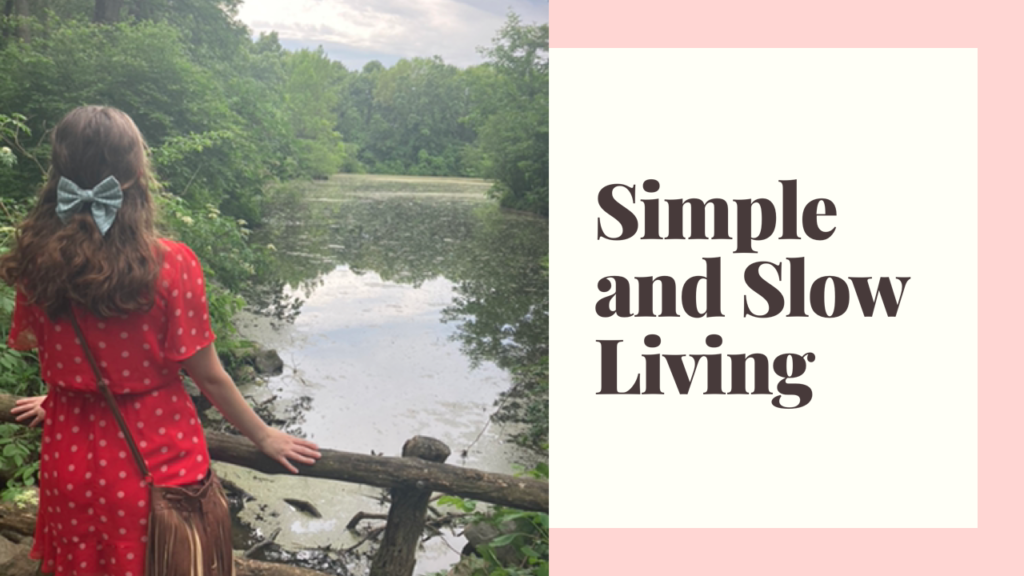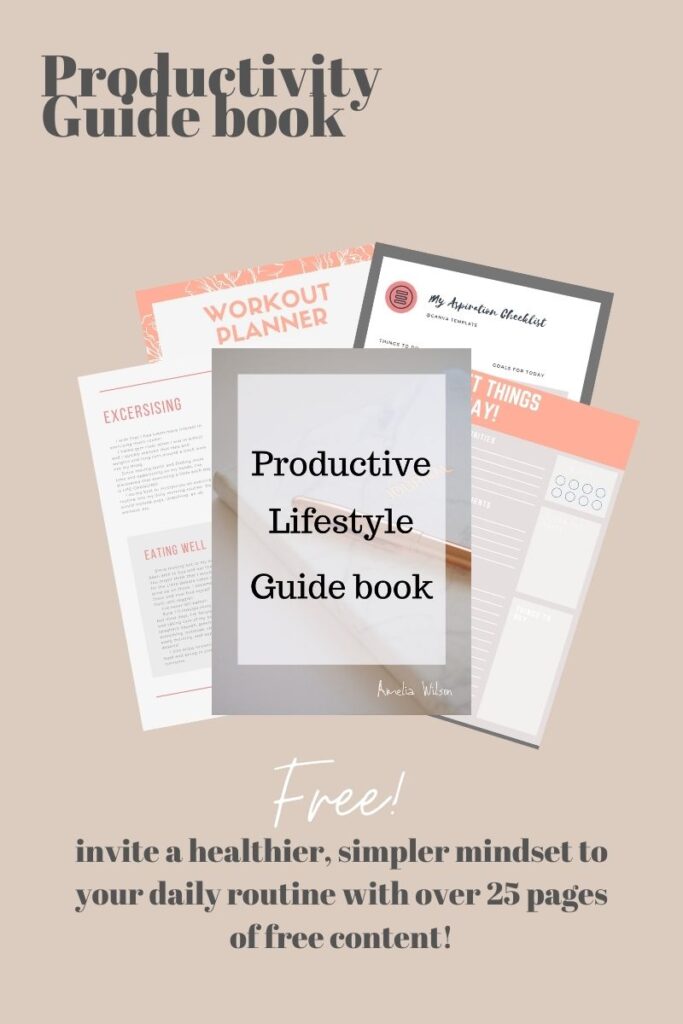Not too long ago, I heard the term “simple living.” I think I must’ve been scrolling through someone’s minimalism series or a blog post on homesteading (honestly, I forget!). But the term stuck out to me.
Following this discovery, I began to see the phrase, along with its cousin—intentional living—everywhere.
I decided to do some research and now, I have a new goal in life.
Disclaimer: All of the views and opinions in this post are solely my own and are not sponsored. This post includes affiliate links, meaning I earn a commission through links at no cost to you.

I posted this photo on my instagram about the situation with a caption:
I concluded my post with “finding simplicity in the stress has been hard for me, but it is something that will benefit me in the end.”
But I guess before we get into things, I need to share a few definitions first.

What is simple living?
Simple living (my understanding of it, gathered from a number of sources on the topic) is: a way of life, often associated with minimalism, where an individual begins practicing gratitude for what they have rather than stressing over what they do not have.
Simple living can be similar to taking life slowly, not stressing as much, and owning less “clutter” to clear the mind.
The act of simple living focuses on living in the moment and searching for simplicity during your daily routine. Simple living is about seeking out the small joys and eradicating any “noise” or “clutter” that would harm your well-being or overall mindset.
You can think of simple living as a lifestyle that aims to shut out the “clutter” and “jargon” during everyday life. That’s not to say that a city-dweller couldn’t live a simple existence. Instead, it means cutting out that which doesn’t serve you. Therefore, everyone’s journey will be slightly different.
Is it different from Intentional living?
In a way, yes. Intentional living is about making everything you do count for something. For example, you hang out with people you genuinely enjoy. You partake in activities that will help you to better yourself. You own only what is necessary to you (think Marie Kondo and owning what sparks joy).
It’s different from simple living in that, rather than focusing on gratitude and “less is more,” your focus is on the results of your decisions. You make choices intentionally and live life more practically. There is more focus on responsibility and less “on a whim” decisions.
Intentionality is best summed up by Greg McKeown in his book, Essentialism. In his book, he expresses the idea of essentialism as a means of analyzing your current situation to see where your energy is being used. The goal is to evaluate how you spend your time and resources to decide what is worth it and what is not.
Intentional living hones in on this principle and asks you to decide if what you’re doing is a conscious decision. Ask yourself the following questions to decide if you’re being intentional or not:
- Are you performing this action on autopilot or did you actively decide to engage with it?
- Does performing this action provide value to you?
- Are you maximizing your resources, time, or energy in order to accomplish it?
- Are you putting in too much effort? Or, is this action worthwhile?
These are just a few things you can ask yourself to gauge whether or not performing a certain task is intentional or not.
So, what is slow living?
Slow living is so similar to simple living that I’m almost certain that they are the same thing. Slow living, to me, is about well, taking life slow. It’s about not chasing deadlines and always adhering to a schedule.
Slow living is (in my mind) a mix of intentional and simple living. Each decision is well thought out, but there is an emphasis on remaining calm and avoiding stress.
Hygge is a perfect example of slow living. There is an emphasis on intentionality, coziness, and serenity. To live slowly is to take things step by step without any stress, worry or anxiety.

Where do I want to go with this?
I am INTRIGUED by these ways of life. I admire the focus and aspects of each and wish to implement their systems into my life.
Why?
Simply put: for happiness. Almost all of the authors on the subject have argued that the benefits of these practices are a happier and healthier life. I enjoy the idea of slow, stress-free mornings and evenings. With a day of intentional decisions and a life filled with simplicity and understanding.
Now, I want to be clear that happiness should never be the end goal. There is a lot of toxic positivity surrounding the personal growth space that I think hinders one’s ability to be a beautiful and messy human.
However, there’s no denying that a stress-free and simplistic lifestyle appeals to many!
Here’s what you can do to implement these lifestyles:
Simple Living:
- de-clutter my spaces (less paperwork, fewer emails, less junk)
- begin cooking more
- growing my own food
- practicing honest and open communication
- learning de-stress techniques
Intentional Living:
- organizing my days/weeks/months more efficiently
- partaking only in the activities that truly serve me
- spending time with the right people
- creating “habits” that help me grow
Slow Living:
- practicing meditation
- taking social media breaks/no phone during morning and evening
- learning to love silence
- taking more walks/enjoying nature
Final Thoughts on Change
These are lifestyles, truly. Intentionality doesn’t seem like a farfetched dream for me. I am constantly talking about productivity and using (almost) every waking moment working towards my goals.
Slow living will likely be my hardest lifestyle change. Namely because it requires that you step back and take deep breaths without worrying about to-do lists, chores, or planned events. Slow living is about not beating yourself up if you slip up or fail.
Simple living, much like slow living, asks us to de-stress and to create simplicity within our waking lives. Simple living is about not allowing the “clutter” of life get to your head.
These will be hardest for me to surrender to, but I understand the benefits of each.
I hope to make more in depth posts on these topics as I learn about them.
If you like this post, check out some similar posts of mine below:
Feel free to leave a comment below and let me know your thoughts on these lifestyles!
You can also email me with questions or concerns you may have at info.amelia.wilson@gmail.com
Also, check out my poetry book, The Lights are on but Nobody’s Home, available now on amazon for $6.99!
Disclaimer: All of the views and opinions in this post are solely my own and are not sponsored. This post includes affiliate links, meaning I earn a commission through links at no cost to you.
Thanks again

